France Week 2-4
Hi again, it’s been a while! I have been trying to find the balance between living in the moment and documenting everything. After a few weeks, the amount of content I needed to catch up on was daunting, so I neglected the blog a bit. Here’s a review of weeks 2-4.
France week 2
After my first few samples, email responses started rolling in, and I found this week to be the most productive for my project. I thank everyone who kindly welcomed me into their lives, and want to share a few highlights here.
I brought in cheese from the farmers market (samples 1-8) because I simply had too much for one gal to eat. My prof, Dr. Jean-Yves Bouet, kindly went to get a few baguettes and labmates enjoyed the haul throughout the day. There was a group meeting that Monday, so I presented a few slides about my background and project to the team. While the meeting is normally in French, all the team-members have a professional working level of English, which saved me the embarrassment of sounding like an 8-year-old trying to speak in French. While the team consists of experts in the field of genome dynamics and plasmid partitioning, they gave such helpful information about cheese regulations in France. The Institut national de la recherche agronomique, or INRA, has a large focus on understanding fermented dairy diversity across the country. INRA recently merged with another national research institute, IRSTEA, to create INRAE, or Institut national de recherche pour l’agriculture, l’alimentation et l’environnement. They have an ongoing study to create metagenomic and gene expression databases of protected French cheese.
Since 1411, France has protected the production of many of its food products, ranging from olive oil to lavender to cheese. These products often have long-established histories in geographical areas and cannot be labelled under the same name if produced outside of that area. Terroir is an all-encompassing term for soil, environment, and climate in a specific region that can influence how a product turns out. In France, products were designated as protected under Appellation d’Origine Contrôlée (AOC), which has now become Appellation d’Origine Protégée (AOP). This means when you go to buy a Bordeux wine or slice of Roquefort cheese, it will have an AOP label on it. Europe-wide, the label is PDO, or Protected Designation of Origin. There are about 46 cheeses and 300 wines that hold this designation. While I had a vague idea of France protecting “Champagne”, I did not know the depth of agricultural protections present in the country. Once day, I was showing my graduation photos to a lab mate and came across the classic “champagne spraying” photo. I explained the American celebration tradition of spraying “champagne” and she quickly corrected me, “No, no. That is just sparkling wine”. She was right, it was $5 bottle of Rosé from Ralphs.
After group meeting, I completed my first 9 extractions, with the last sample being Dr. Bouet’s home-grown kefir. The protocol is very straight-forward and takes about 2 hours to complete, from weighing out the samples to having DNA in hand. Here’s an over-bench view of me adding Solution CD2, which precipitates non-DNA material like cell debris, polysaccharides, and proteins. This is the first step in purifying the DNA after releasing it from bacterial and fungal cells.

When I presented my goal of finding local, unpasteurized cheese samples, Prof. Bouet referred me to Anthony, owner of La Laiterie Toulousaine. Anthony is a true expert of his craft and a former engineer. He consciously collects milk from farms in the area, usually leaving at 4 in the morning so he can be back in time to make cheese with the fresh milk that day. Anthony graciously spent a few hours explaining his processes and taught me much about the microbiological regulations that French cheesemakers must follow. Raw milk consumption and raw milk cheeses are declining across the country because every few years, there is a Listeria outbreak, usually disproportionately affecting children. The Institut de l’Elevage, through European and French regulatory collaboration, created a set of guidelines for maximum quantities of key microbes in all dairy products, from raw milk to ice cream. In some cases, these are extremely specific to the time of production (pre or post-fermentation, for example), but one finding is clear. Listeria monocytogenes should be absent in every product except raw milk. Then, it is permissible up to 100 cfu per milliliter. I think this is interesting because it acknowledges the fact that Listeria monocytogenes may be present at low levels in raw milk, but cheese and yogurt fermentation should provide the environment for this bacteria to be outcompeted by other microbes, either from starter or those present in the milk already. I am excited to look into this further, as I collected several raw milk samples.

The burden falls on the local artisan cheesemaker to ensure their process is hygenic and does not promote growth of L monocytogenes, E. coli coliforms, or Salmonella past acceptable limits. Anthony submits his cheeses for culture-based testing when needed, but was excited to learn specifically what microbes were in his samples. Because he hosts frequent cheese workshops, he will be able to tell visitors which bacteria and yeast are present in what they are making. I find this to be one of the most rewarding parts of my project. Time and time again, I met local producers who pour their heart and soul into sourcing milks, developing cheese recipes, and optimizing their production. So many of them had a deep interest in the microbiology of what they were spending their days making. However, collecting and understanding microbial composition data can be time-consuming and expensive. I hope they find our conversations at the time of sampling and when I send them their data fulfilling and useful.

I collected 16 samples from Anthony, jotting down as much information as I could about the starters, type of milk, and aging process. When possible, I took samples from the rind and the inside of the cheese. Later that week, I was able to collect time-course cheese samples starting from raw milk he collected that morning from a farm in Montauban. My collection method got a little more sophisticated than ziploc bags thanks to some cardboard, tape, and screw-top tubes from lab. While we were discussing raw milk, Anthony pointed me in the direction of a few papers circling the cheese community in France. One paper discusses the potential of raw milk in early childhood to reduce asthma through metabolites produced by gut microbes. Recently, pathogen risks and high costs of raw milk have caused an industrial and regulatory movement towards pasteurization. Last year, the AOP for Camembert changed to allow pastuerized milk, much to the dismay of small producers and farmers in the region. Surely microbes present in Normandy cow milk contribute to the terroir of this cheese, so the ongoing debate about AOP in relation to microbes is interesting to keep tabs on.
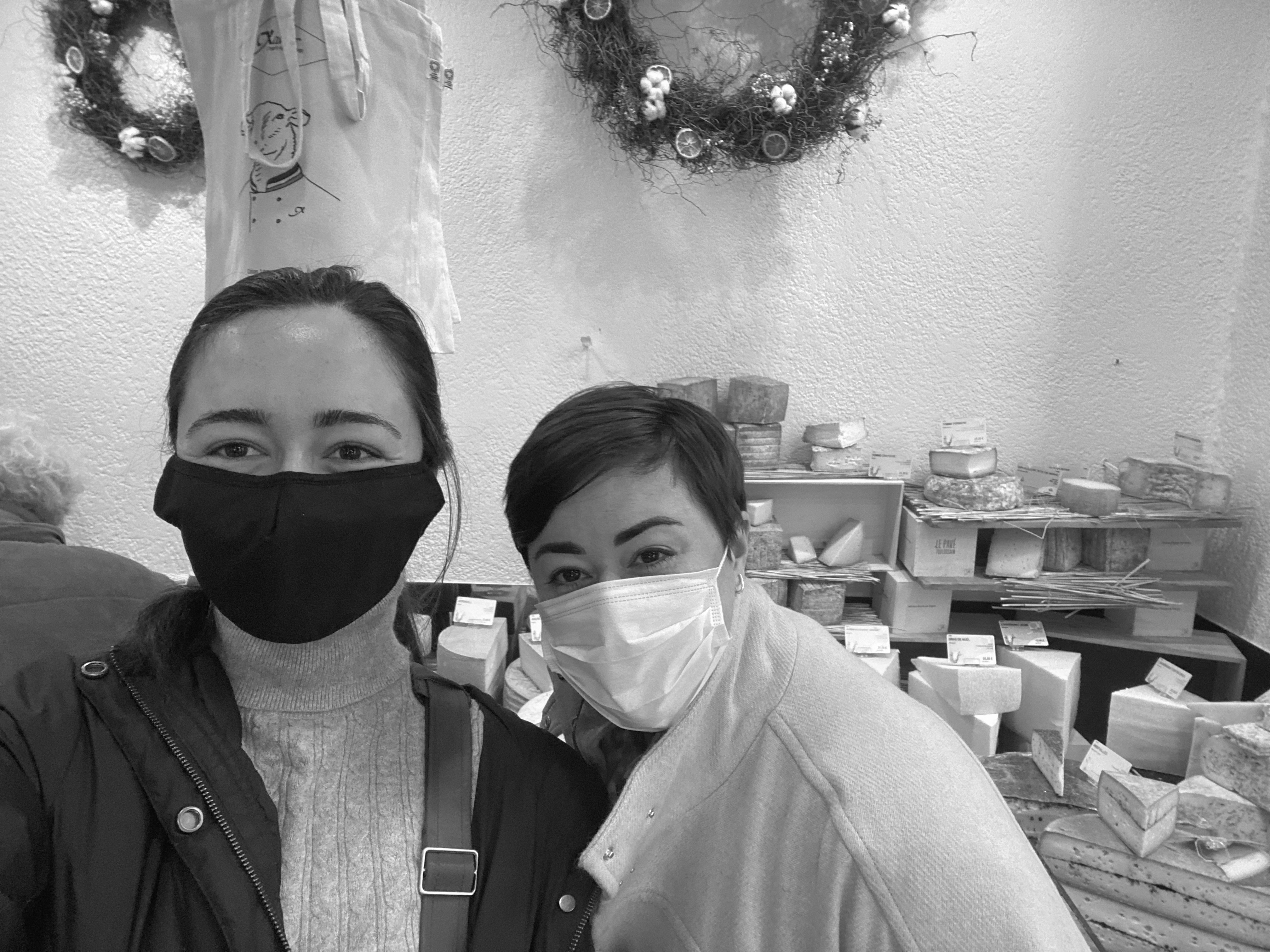
That week, I also met up with Jessica from Taste of Toulouse food tours, who was kind enough to show me around her favorite cheese shops in town. We went to Xavier Fromagerie, and I sampled some of their famous Pavé Toulousain. Jessica explained that the modern cube shape of the cheese represents Toulouse’s efforts towards technology advancement, as well as mimicking the brick structures common in town. She showed me around Victor Hugo Market, which is a local favorite featuring dozens of food vendors. From Fromagerie Emilie, I sampled a couple of hard cheeses just one farm away from each other in Ariege. I took a sample of raw crème fraîche from Deux Chavanne. Jessica also had a few recommendations for other spots in town, which I went to the next week!
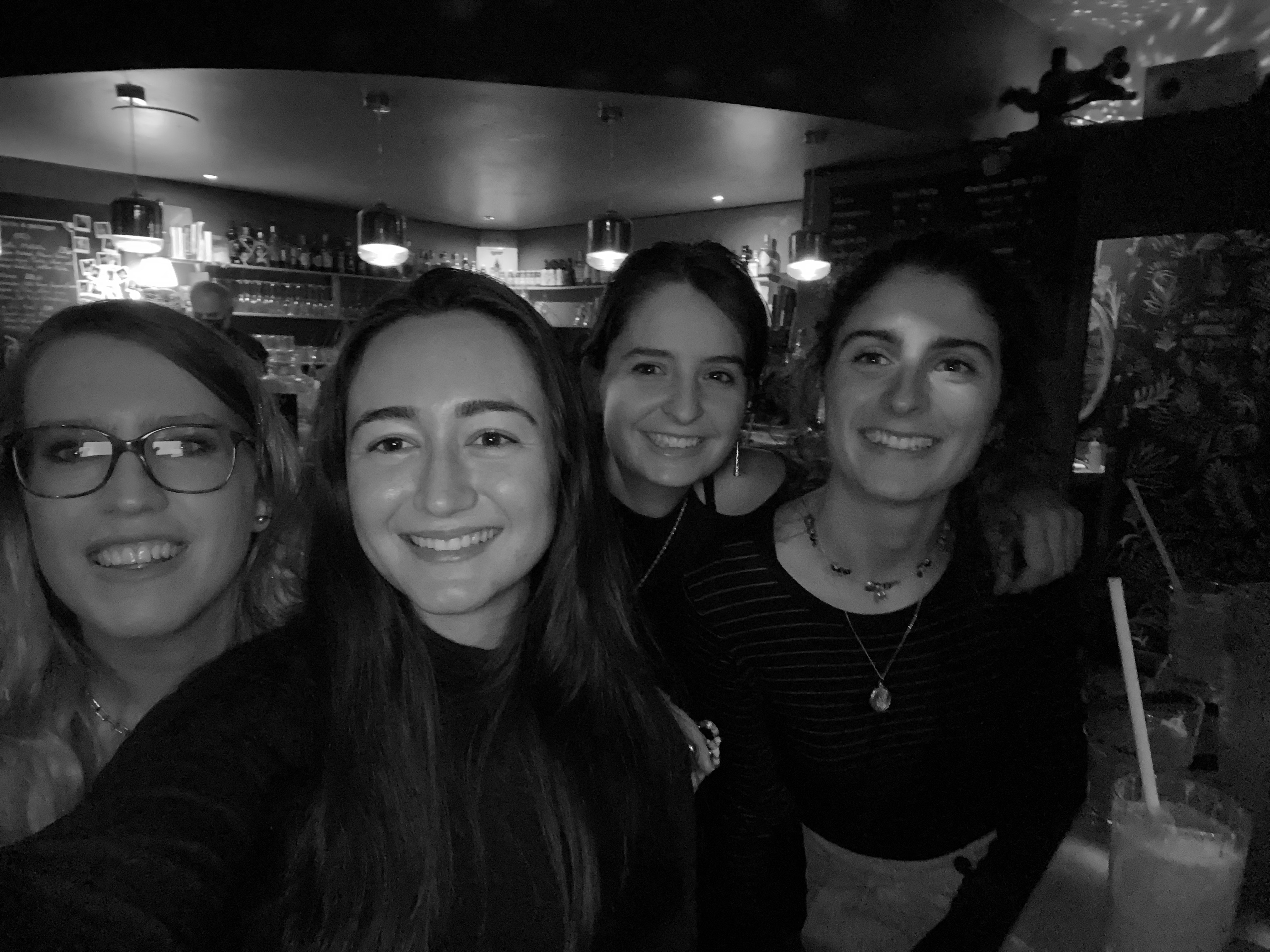
At the end of the week, I went to Mokolo, a bar in Carmes, with Prof. Bouet’s daughter, Leah, and her two friends from school. It was so interesting learning about their lives growing up in France, and their impressions about the US. I was happy to share my food recommendations for New York with them in exchange for their favorite bakeries in town. It is easy to forget how big of a role the US plays in global media, politics, and culture, when I usually only engage with domestic news at home. When I do read international news, it’s through the New York Times or other US-based companies. They grew up having a deep understanding and appreciation for local, national, European, and international affairs. Most of the TV and music they listen to is from the US. During our conversation, I found myself feeling the sudden urge to read up on global news as soon as I got home. But the kind of knowledge they had wasn’t just from keeping up on US headlines, they were aware of and curious about American culture. It was wonderful to share what I could about my background, but I honestly felt like a naive tourist when most of what I knew about their culture came from my French class, Emily in Paris, and barely 2 weeks of living there. I felt no passing of judgment, which I was grateful for, but it made me realize how much there was to learn.
To round off a wonderful week, Prof. Bouet graciously invited me to his family home, showed me their gardens, and we walked along the Canal du Midi, a UNESCO World Heritage site.

France week 3
My first farm visit! La Ferme du Bila graciously welcomed me to their farm. I took a 6 AM train out of Toulouse, and they picked me up after dropping their kids off at school. Emilie gave me a detailed tour of their cheese-making facilities, which she designed on her own after visiting and learning from many others in the area (and at a cheese shop near Niagara Falls, where she trained!). I got to meet their goats, which they feed from grains grown on their farm. They started off with a few goats several years ago, but now raise the baby goats each year, so no new animals enter the farm. A closed-loop system! At points during the year, if the goats have lower milk production, they sell some of the grains they harvest as well. While the starter she uses is industrial, she passages it for a few months, using a little at the end of each passage. This can give rise to some interesting evolutionary dynamics, so I was interested to take some samples from different stages in the aging process. Emilie and her husband were very welcoming and open in telling me about their story. The farm has been in his family for at least 500 years. The time scale is absolutely astonishing to me considering I have not ever lived in the same house for more than 5 years. They kindly drove me back into Toulouse as they were heading in to buy holiday presents for their boys.
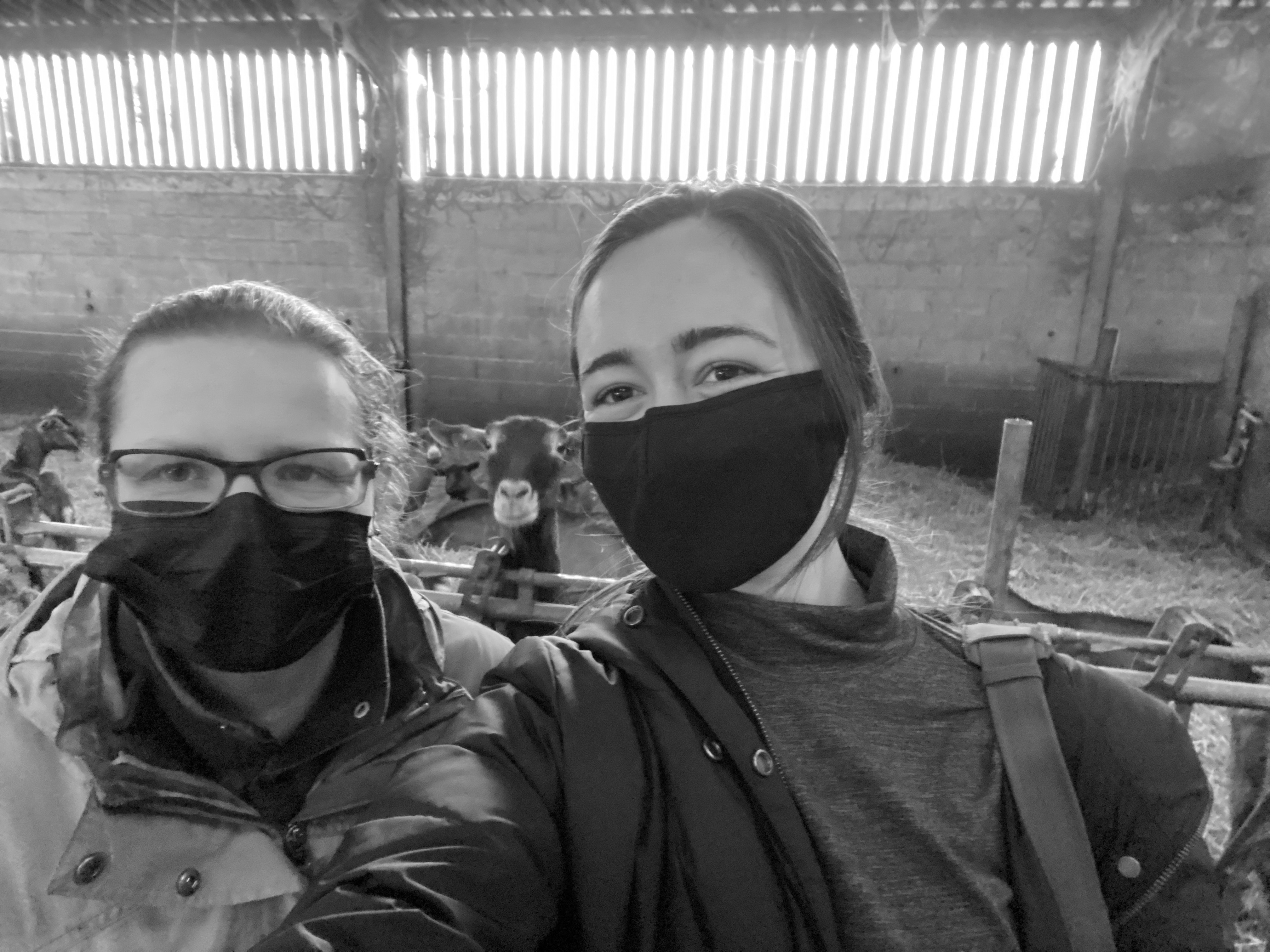
Baptiste from Boulangerie Maurice, which Jessica recommended, was so excited about the science! We spent a few hours discussing his process, which emphasizes natural fermentation and non-industrialized methods. To this end, he hand-kneads all of his dough (you have to check out the videos to believe it). He started his bakery a few years ago as a third career. His starter, named Maurice, is only fed with top tier wild 40 grain flour from a nearby farm. Baptiste knows his starter probably more than most people know their best friend. Just by touch, he knows when Maurice is hungry, and can tune the humidity, water level, and temperature to get the happiest starter needed to make dozens of delicious loaves of bread per day. In the past, Baptiste has shared Maurice with friends, and shared that it takes about three months for sourdough starter to change in consistency, texture, and taste, when exposed to any new environment. I would like to analyze this further, because my hunch is that the microbes start changing immediately. As we were discussing, customers filtered in, grabbing their loaf or a sourdough chocolate chip cookie to go. Baptiste spent a few minutes catching up with the regulars before shifting right back to explaining acidity during sourdough fermentation to me. Together, we planned a few experiments. I took sourdough in the morning, and after a few hours of fermentation. I also took swabs of his wooden kneading station and his hands to see if we can detect microbe transfer between the surfaces.
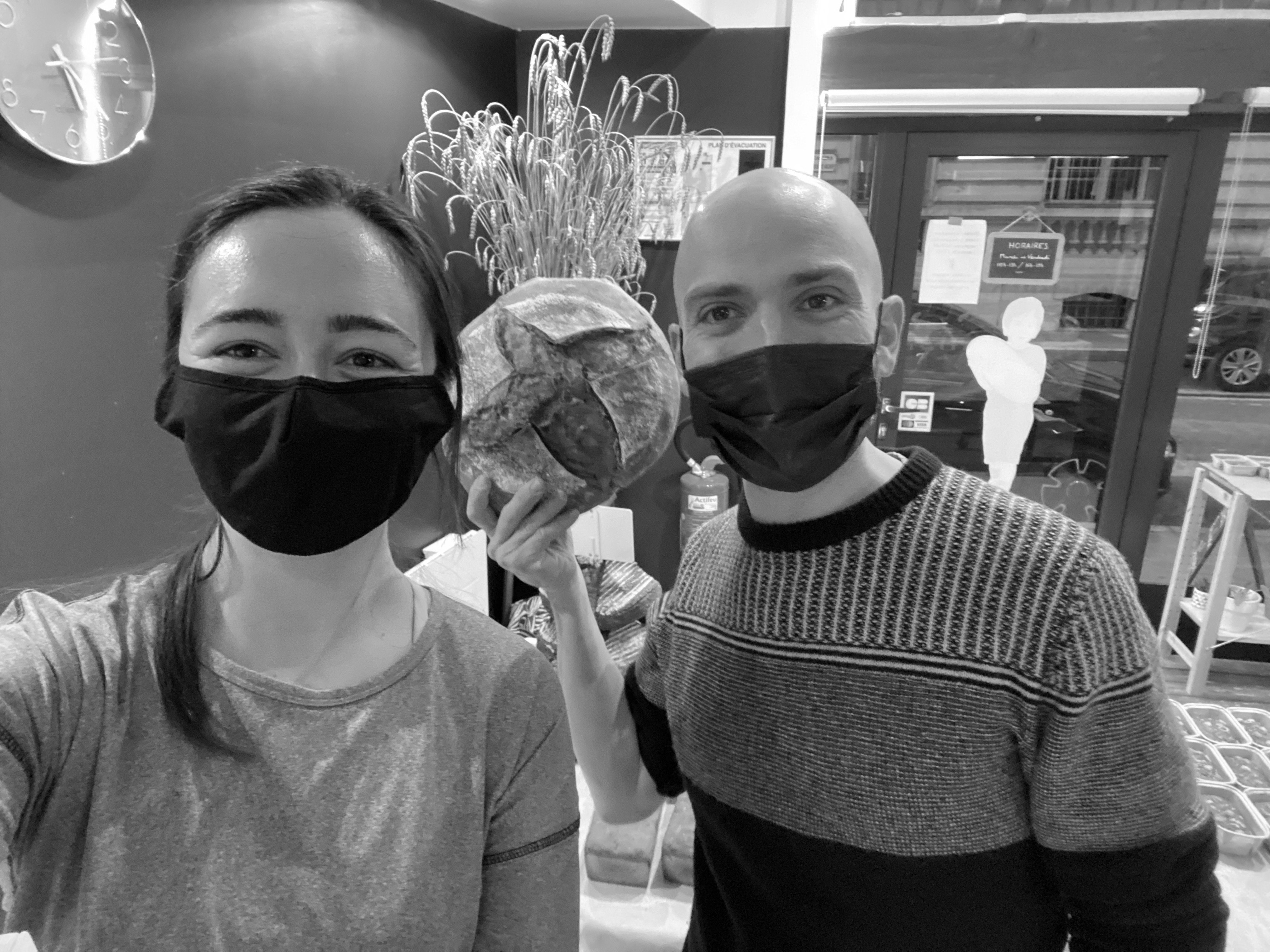
My last sample collection in Toulouse was from Prof. Helene Tormo at École d’Ingénieurs de Purpan. I got in touch with her from one of the professors at CBI Toulouse. Prof. Tormo is a leader in dairy microbiology, and collected a couple of Pelardon samples for me from local farmers she was in contact with. I am realizing this post is slowly turning into selfies with all of the cool people I met this week, and that’s ok! One of my favorite parts of Watson has been meeting people from different backgrounds, hearing about their lives, and learning about what they are excited about.
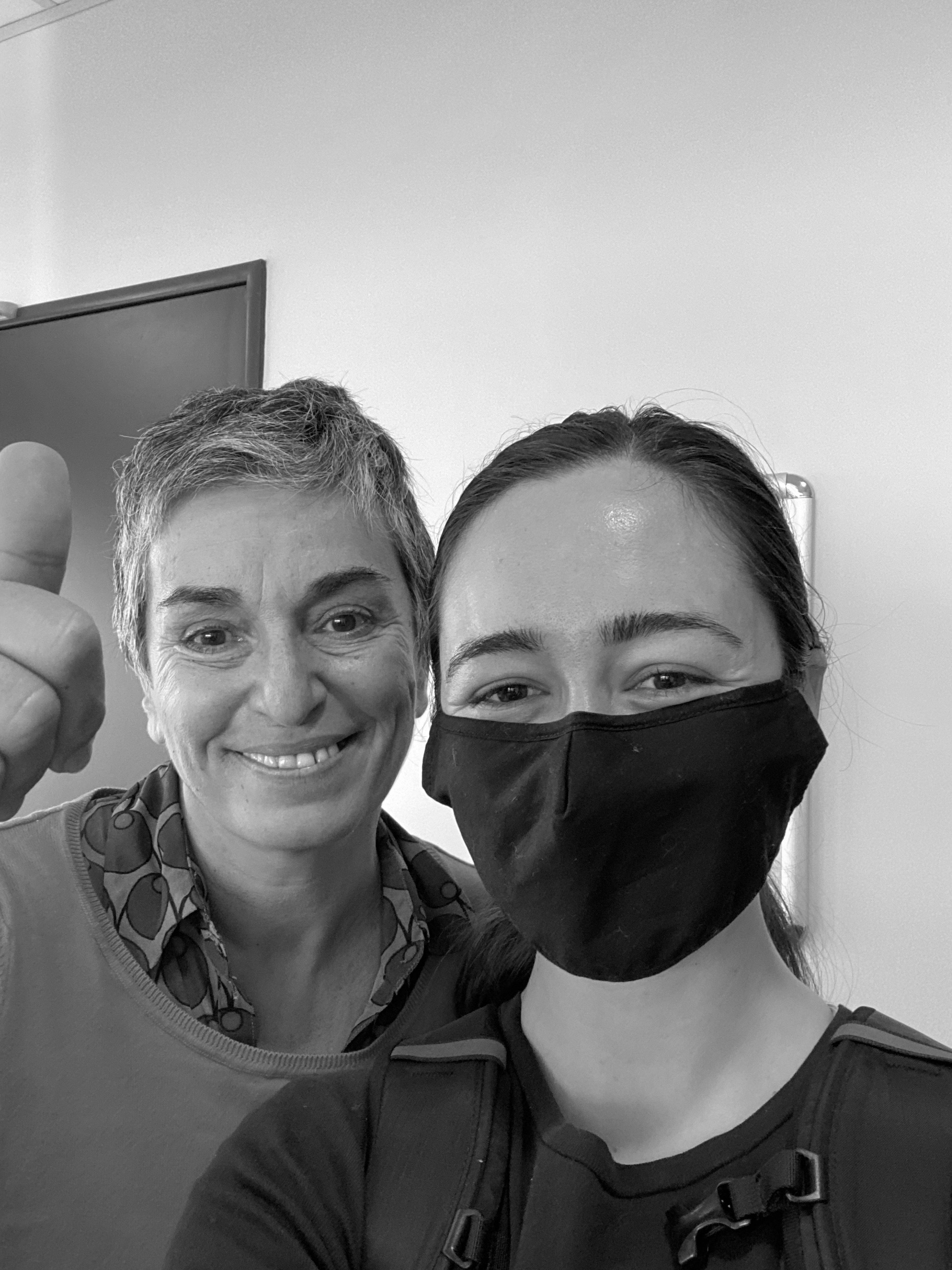
I wrapped up the week by finishing extractions and getting my samples ready to ship to Switzerland. It was December 17th, and ETH Zurich had already started holiday. CBI Toulouse was going to be mostly on holiday for the next few weeks, so I discussed with someone in lab to arrange shipment of my samples in January – more on that in the next post.
This week, I also went to the movies to watch Spiderman: No Way Home, a whole two days before it was released in the US! I must say, it was a bit of a challenge because the movie theater was much stricter regarding COVID vaccination than any restaurants or stores. While vaccination was not mandatory in France at the time, you had to show proof of vaccination to enter any indoor establishment. In the EU, they have a fancy QR code that some people even had as their phone screensaver because they had to scan it so often. I, on the other hand, have an awkwardly sized piece of paper from the CDC with the handwritten date and brand of doses. The California QR code didn’t work – I tried. At the beginning, I was carrying a photo of my vaccine card, but one cafe asked me to see the original document, so I got in the habit of bringing the actual card with me everywhere. I kept it in a ziploc sandwich bag for super secure waterproofing.
So there I am, waiting in line at the Gaumont Capitole movie theater to pass the security checkpoint. There is one burly man at the entrance scanning the QR codes. I finally reach the front, hand him my plastic bagged piece of paper, and he does not look impressed. He stares at it for a few seconds, then starts asking me questions in French. I ask if he speaks English, but he shakes his head and we reach a stalemate. He grabs his walkie talkie and calls for more help because there are at least 15 people behind me waiting to see the Spiderman premiere. Nobody seems keen to help out, so the security guy waves me to the side and keeps scanning people in. A few minutes pass, the line gets even longer despite the steady stream entering, and English-speaking backup is nowhere in sight. So I stand awkwardly for a few minutes then try to show the guy my card again, pleading in my broken French that I am vaccinated and boosted. He responds in a stern tone, shaking his head. I felt so embarrassed seeing all the locals breeze by me without a hitch, seemingly laughing at the tourist who couldn’t speak French. After a few more minutes of trying to discuss with him, I called it quits and walked home, cheeks bright red in shame. Why was I crying over not getting to see a movie? Why couldn’t I be more assertive? Why couldn’t I speak French?
Surprisingly, this was one of my lowest points of my Watson so far. And I am sure it sounds silly and unbelievably privileged to be upset over a movie. For me, though, this interaction felt reminiscent of a lot of the broader challenges I was facing. Let me rewind a bit here. At this point, I had no set plan on where to go after France. My next country, Iceland, was still on level 4. My country for February, Finland, was on holiday until the last week of January. They also rose to level 4 around this time, along with almost the entire world. I sent some emails to labs in a few countries that were level 3: Ghana, India, Kenya, and Indonesia. Sweden was the only European country still on level 3, but with how omicron was progressing, I had a hunch it would rise soon. It seems that the US Travel Advisory mainly takes case counts into consideration, rather than hospital availability or medical access in the event of infection. I understand perceived risk very much depends on the person, but for knowing myself and my travel experience, I would feel less safe in Sierra Leone (level 2) than Finland (level 4). I struggle with understanding how much of this is due to my biased perceptions versus objective facts about the countries. The truth is I don’t know much about West Africa as a whole. I would like to learn more, and break down any incorrect stereotypes I hold about safety there. I came to the conclusion that traveling alone during a pandemic to Ghana or Kenya for the first time was not in the cards for me. I started to feel so lost at this time. I had no concrete plans for where I would be 10 days in the future, and it felt like my life was being decided by the US Government’s RNG of COVID advisories. Maybe that sounds like a burly security man telling you whether or not you can see a movie, or maybe it doesn’ t. But when I was walking back from the movie theater, I was thinking if I spoke French fluently, I could spend January in smaller towns where English is less common. If I was more assertive with why I thought the US Travel Advisory was a poor indication of COVID risk, maybe I could convince the Watson committee that level 4 was OK. And if I wasn’t alone, I could easily explain how I felt to my friends or family without sounding like a petulant who couldn’t go see a movie.
For what it’s worth, I went back later and the security woman waved me through without a second glance at the paper vaccine card. And the movie was amazing.

I spent the weekend enjoying Toulouse as a tourist. The local museum hosted a large display of birds, bugs, and bones in the biodiversity section. Their botanical gardens were wonderful, especially the tropical plants room. Heated to a toasty 78F, it was the coziest and warmest I had felt since arriving in France. There were comics scattered around the museum as well, and dare I say that they drew a bacterial cell as one of the 10 things that have changed the world? I can only guess what the silhouettes are meant to represent. I also highly recommend the local aerospace museum. Airbus France is headquartered in Toulouse, and there is a rich history of aviation in the area.
France week 4
Most cheese and dairy farmers had wrapped up production for the season and kicked into high gear to sell the last of the year’s products for holiday meals or gifts. With no lab access for the rest of my time in France, I was deciding whether to stay in town or explore more. One of my good friends got me these fun match-stick adventure starters before I left on my Watson, and I like to pick one every once in a while. I ended up with this one:
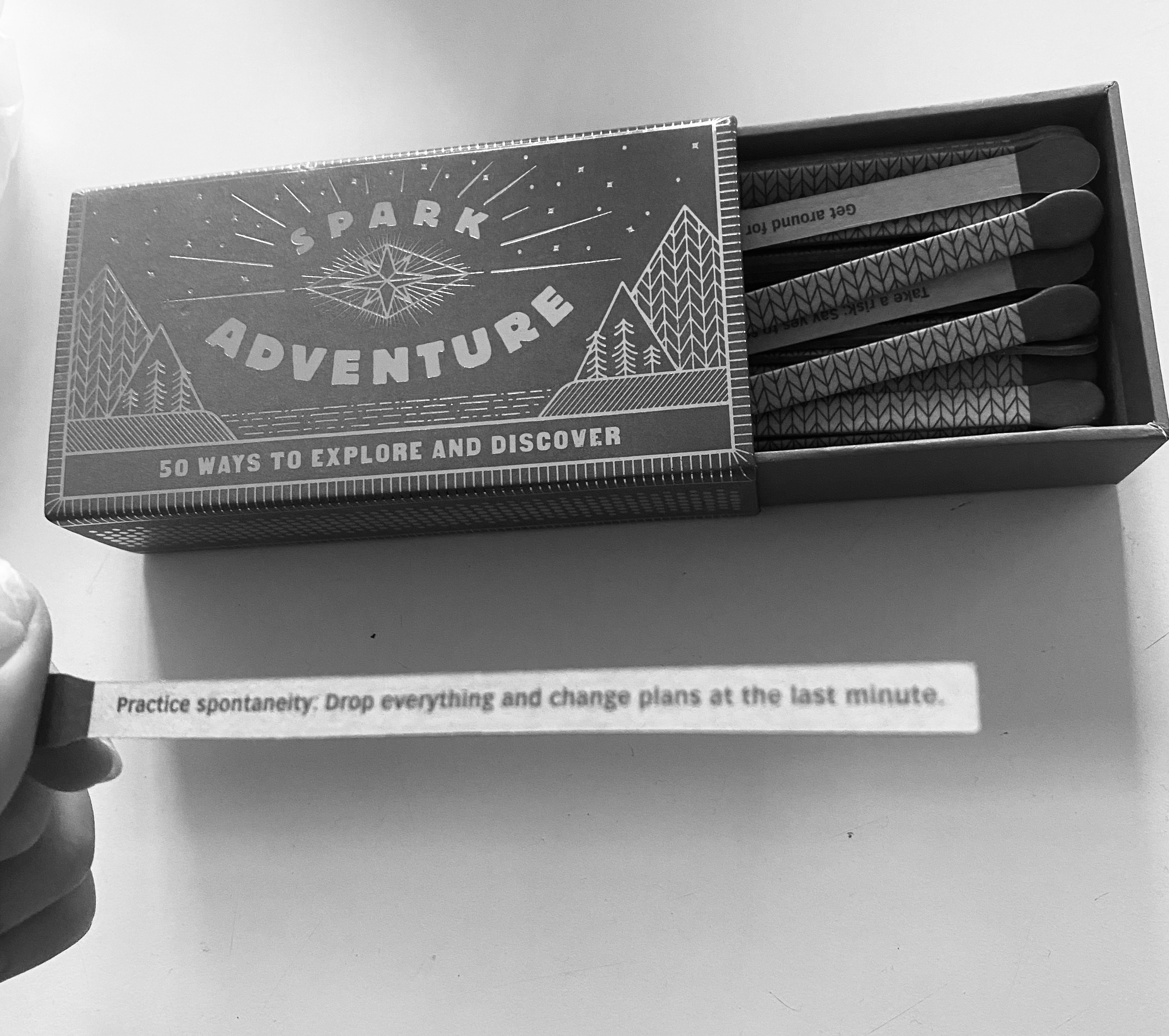
In general, I am a very organized, planning-oriented person. I like to make a schedule and stick to it. This helped me with managing my research and homework in undergrad, but part of the reason I applied to the Watson was to learn to live without a plan. Going into my Watson, I knew there would be situations where I would learn something that would change my path forward. I wanted to be open to these changes and learn to adapt to them as they came.
So there I was holding the adventure matchstick. I decided to go on an impromptu backpacking trip around the South of France. I did a couple of hours of research, then hopped on an afternoon train to Carcassonne, one of the most stunning places I have ever been (and inspiration for a board game!). I arrived about an hour before sunset, dropped my backpack off at the hostel, and sped-walked up the hill to the walled fortress. You can freely wander among the roads, feeling like a villager or royal from the 13th century. The modern side of town was very festive, and I enjoyed the local Christmas market.
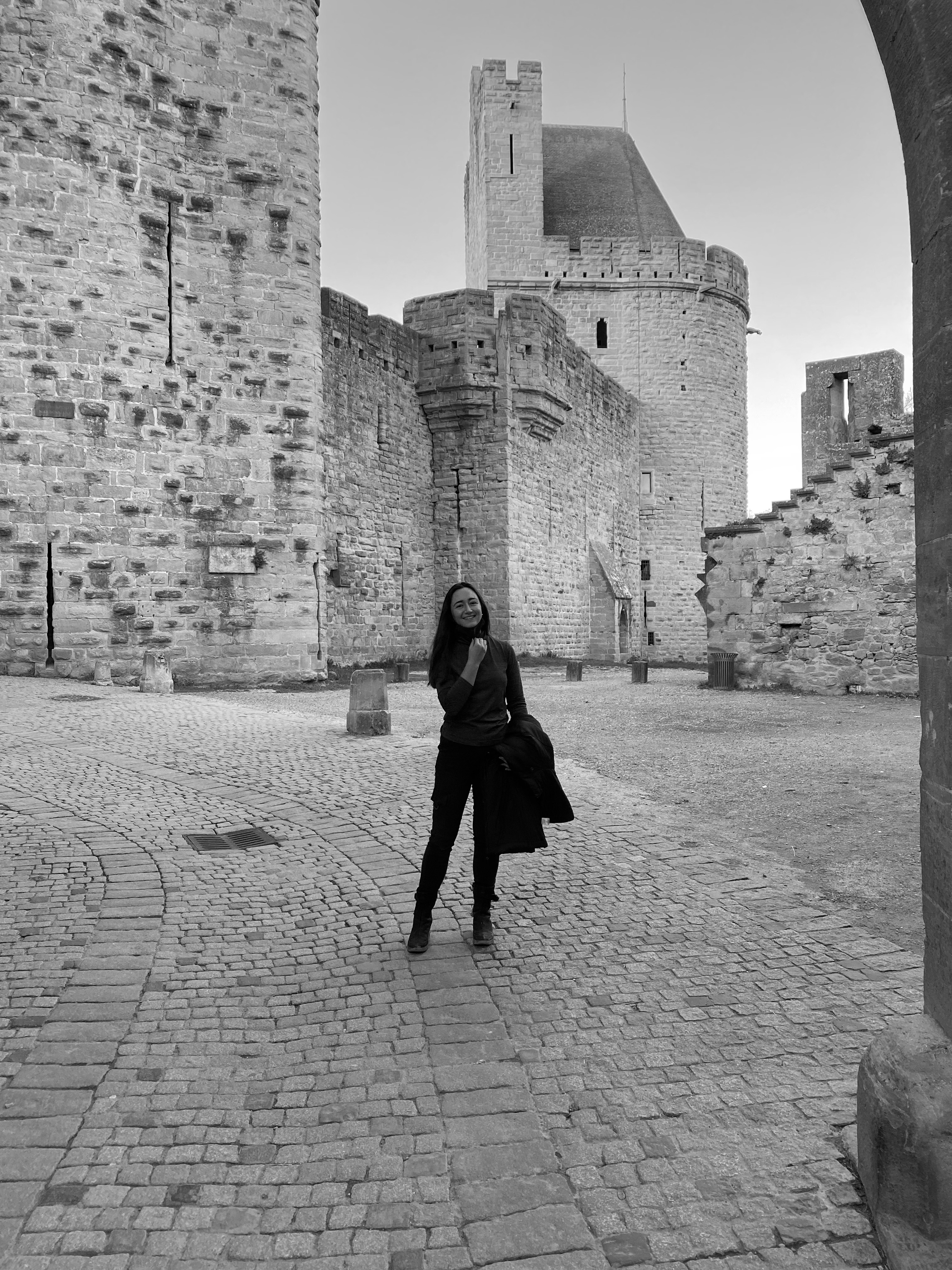
The next morning, I took an early train to Collioure, which came highly recommended by Jean-Yves, my professor at CBI Toulouse. I had tentatively planned on going to Montpellier after spending a few hours in Collioure, but it was too beautiful to leave so soon. I explored the Château Royal de Collioure, which had open tunnels running through the castle. I hiked to Fort Saint Elme, then meandered around town in the evening. Most of the stores and restaurants are seasonal, so it felt a little deserted. I enjoyed the lack of tourists and took the time to peacefully journal along the waterfront. I reflected on what was important to me, how much I felt I had grown in the past month, and planned for the end of the month a bit more. I decided I wanted to spend Christmas in Paris, and probably would find a cheaper international flight out of there than Toulouse. That meant I should be back in Toulouse three days from that point to pack up and move out of my place there. I made the tentative plan for a day in Cassis and Aix-en-Provence, then transit back to Toulouse to wrap up.
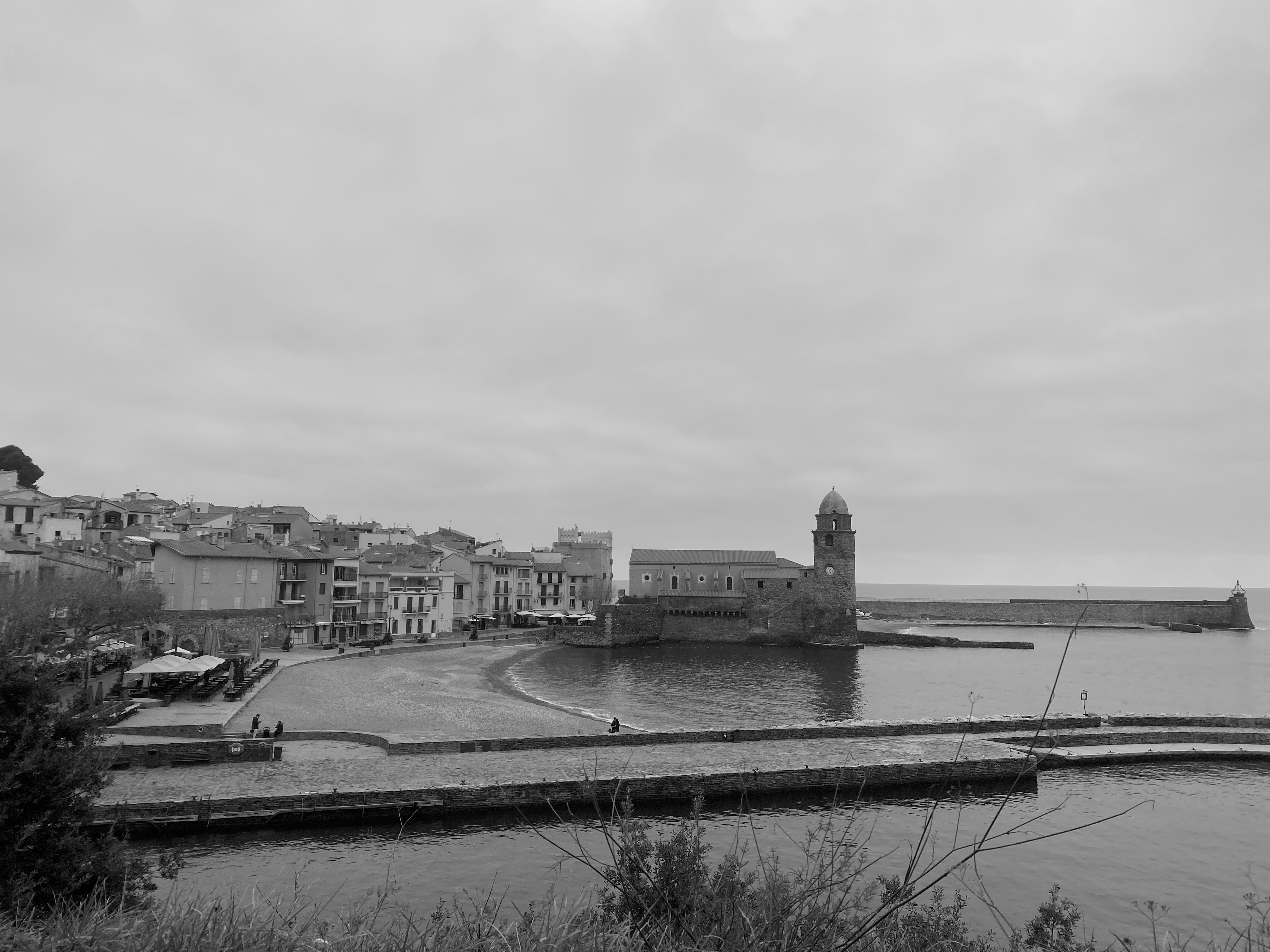
Another early rise to take a 6 AM train to Marseille, then the M8 bus to Cassis, a nearby fishing town close to the Calanques National Park. I had about 5 hours until sundown, so I planned on a few mile stroll to see the first and second Calanques (Port Miou and Port Pin). I dropped off my bag and water at the hotel, only bringing my phone and still wearing my heavy down parka. Now, I have done quite a bit of hiking in California, but the views throughout the Calanques are unlike anything I have experienced before. There are ample look-out points to gaze at where the crisp blue Mediterranean sea meets the stark white limestone. The whole afternoon felt like a dream. I ended up hiking to the third Calanque (d’En-vau), which was strenuous and rocky. Once I got to the rocky beach and dipped my toes in the water, all my stresses about where I would live in eight days just melted away. I spent as much time there as I could before I had to head back while it was still light out.

On the way back, I started talking to a wonderful newlywed couple from India. I had a great time exchanging stories, learning their wedding was bigger than the entire undergrad population of Caltech, and graciously accepting their offer to drive me back to town and buy me dinner. Thank you Prerak and Devanshee, come visit Boston anytime!

I took the same bus back to Marseille, then the L50 to Aix-en-Provence. This was probably the most posh of the French towns I visited. While journaling at a cafe during lunch, the man at the table next to me asked what I was writing. I ended up talking to him and his daughter, a PhD student in Paris, for almost an hour. Traveling alone can be isolating at times, but it often opens doors to meet new people. If I had been entrenched in a conversation with someone, I would have never heard about his and his daughter’s lives in Aix-en-Provence and Paris. On my way out, I accidentally knocked over my water glass and instantly felt beyond embarrassed. The waiter just laughed it off. He told me, “I don’t know how to say it well in English, but my mom always said”
“If you never do anything, then you will never make any stupid mistakes.”
La Cabane en Ville's Waiter's mom
Thank you, waiter man, I think that will now be my motto for pushing myself to try new things this year!
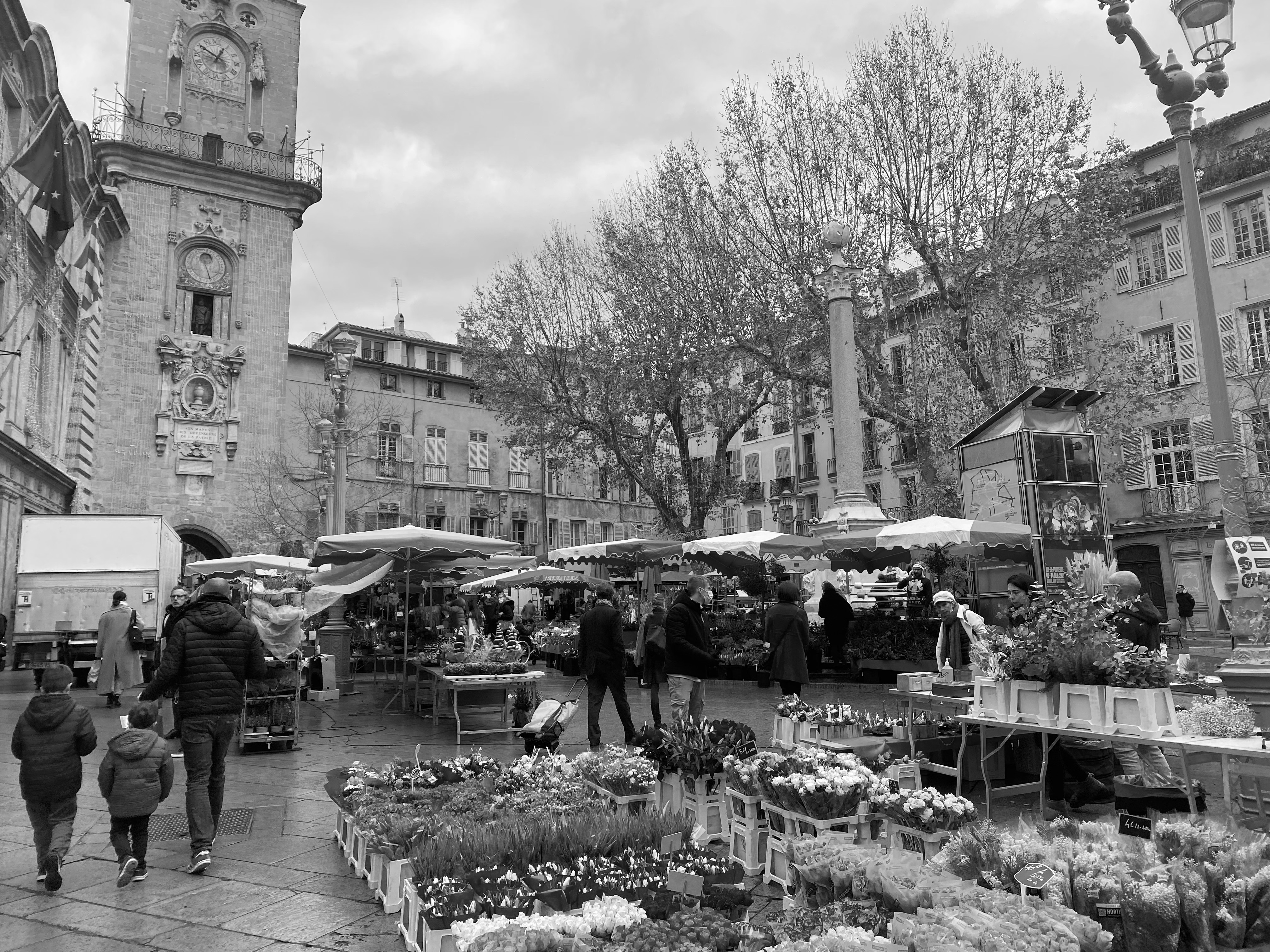
On Christmas Eve, I took a BlaBlaCar back to Toulouse, which is basically a long-distance Uber Pool. I got to meet three people who were heading home for the holidays, and shared my story with them. It is always funny to hear the reactions when I explain the Watson. It probably depends on how I explain it, but some people are interested to hear more about my research, or traveling during COVID, or how I make friends when traveling alone. To answer the last one, if I don’t meet friends through a mutual pal, my second go-to is asking people if they want me to take a photo of them. Hopefully not in a creepy way and only if I see them struggling to center the castle or Christmas tree or fountain into the background of their selfie. Usually people offer to take one of me afterwards, and then occasionally a conversation strikes up.
Wrap
I spent my final evening in Toulouse, feeling a little nostalgic about how quickly the time passed and hoping that I will visit again someday. I hope you enjoyed reading, learned something, or both. If you have any questions, notes, or found a typo, please feel free to contact me.
I will cover my week in Paris (probably in less detail than this), and my month in India in future posts. Sending positivity wherever you are!
Liana Merk is a Watson fellow studying microbial diversity in fermented foods from around the world. She earned her undergraduate degree from Caltech in Bioengineering and will begin her PhD in Biophysics at Harvard in Fall 2022.

